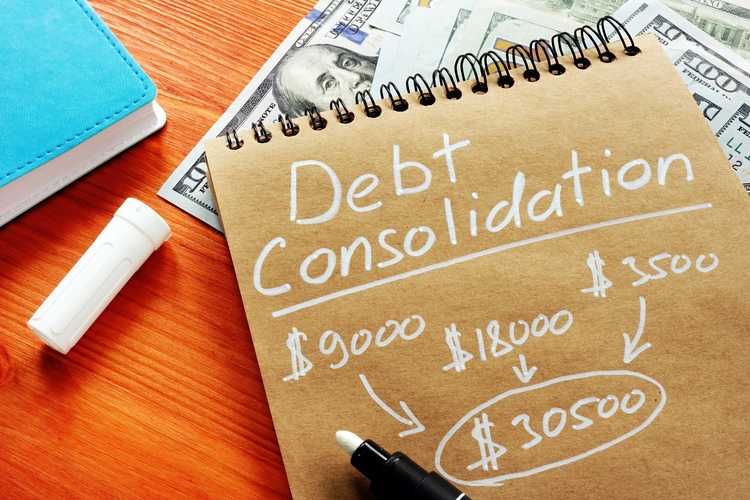Credit cards can create one of the most insidious forms of debt there is. Perhaps that’s because they are so easy to use and obtain, and it’s almost effortless to incur new balances while you’re paying down your existing debts, leaving you right back where you started. There are many techniques to paying down credit card debt, but one of the most important is debt consolidation. Here are ways you can consolidate your credit card debt.
Balance transfer credit card
Credit card issuers compete with each other to acquire new customers, and their existing balances. One of the primary ways that they do this is by offering new accounts 0% APR financing on balance transfers. By law, these interest free financing offers must last at least six months, but the most competitive ones include 12 -18 months of promotional financing on balance transfers.
Once you’ve been approved for a credit card with a 0% APR promotional financing offer, you can consolidate your balances from numerous credit cards. The only drawback to this strategy are the balance transfer fees that you’ll have to pay. You can expect nearly all 0% APR balance transfer offers to have a 3% fee that’s added to your new balance. And while some of these cards have fees of 5%, there have occasionally been offers with no balance transfer fees from time to time.
You should also be aware that you can never transfer a balance between two accounts from the same card issuer. That’s because card issuers create these offers to attract new customers with new balances, not to lose out on interest charges from existing customers.
Once you have a balance transfer credit card, the best way to use it is to pay off your balance before the promotional rate expires and interest starts to accrue on the remaining balance at the standard rate.
Home equity line of credit
If you are a homeowner with significant equity in your account, then a home equity loan could be a very low cost way of consolidating your credit card debt. Because these loans are secured by your property, banks are able to offer much lower interest rates than they do on unsecured debt, such as credit card balances.
Once you’ve opened up a home equity line of credit (HELOC), you can write checks or make bill payments to pay off some or all of your credit card debts. And while you’ll likely incur some closing costs when you open up your home equity line of credit, you won’t face any of the balance transfer fees that you’ll pay if you consolidate your debt to another credit card.
Along those lines, you could perform a cash out refinance of your vehicle. Then, use the additional funds to pay off some or all of your credit card debts. As a loan secured by your vehicle, a car loan will likely have a lower interest rate than an unsecured line of credit.
Personal loans
Personal loans are available to individuals with strong credit, but they are unsecured loans that will have higher interest rates than a home equity line of credit. You can look for personal loans from several sources including credit unions, banks and online lenders.
Credit unions are a good option, because as non-profit institutions they can offer more competitive rates than some for-profit banks. Federal credit unions also have limits on the interest rates that they can charge for personal loans, which is currently 18% APR.
However, personal loans can still have expensive origination fees, and they won’t be available to those with bad credit. Also, you’ll be required to join the credit union first. Often there is little or no charge to joining a credit union, but membership may only be available if you are affiliated with a particular institution, live in a certain city or state or because you or a member of your household are active or retired members of the military.
Another option for personal loans are peer to peer lenders. These services connect borrowers directly with individuals who wish to loan money to them, expecting a return. Peer to peer lending companies only existed since 2005, but there are already many websites that compete with each other. But as with other types of personal loans, you can expect origination fees, credit checks and interest rates that reflect the fact that these are unsecured loans.
Debt management plans
A debt management plan is a special type of personal loan that’s offered by a non-profit credit counseling agency. These loans are offered with the specific goal of consolidating credit card debt for the purpose of paying it off. But at the same time, you can’t use these loans to pay off other types of debt such as student loans or car loans.
Debt management plans can cut your interest rates dramatically, allowing you to pay off your debts more quickly. Debt management plans will also charge a modest startup fee and monthly fee. And as with other types of loans, you need to make your payments on-time or risk reverting back to a higher interest rate.
401(k) loans
If you have money saved up in a 401(k) plan, it’s possible to borrow some of the money from that plan in order to consolidate your credit card debts. These low interest rate, self loans typically have a payback period of five years.
However, many financial planners will disagree with this strategy, as it can negatively impact your retirement. But if you take this risk, then you could enjoy lower interest rates than are available from personal loans or other unsecured loans. It also has no impact on your credit score, since you’re essentially borrowing from yourself.
But beyond the potential impact to your retirement, you could pay expensive penalties and fees if you fail to repay yourself in-time. And if during your loan, you lose your job or decide to leave it, you’ll have to immediately pay back the loan.
Why you should consolidate your credit card debt
Combining the balances of multiple credit cards into a single loan offers several advantages. First, there’s not as many payments to keep track of, which will minimize the chances of making a late payment. Making late payments will hurt your credit score, but it can also result in costly late fees and much higher, penalty interest rates.
Also, consolidating your credit card debt can give you the opportunity to save money on interest charges. This is possible when you transfer your balance to a loan that offers a lower interest rate, or possible a 0% APR promotional offer. And when your balances are subjected to a lower rate, or no interest at all, more of your payment will apply towards your principal. This will allow you to pay off your debt more quickly than you would have with a higher rate.
Eliminating debt from several of your credit cards can also help your credit score, which can benefit from having fewer open accounts with outstanding balances. And when you have a credit card with no revolving debt, then you’ll also have the opportunity to avoid interest charges by paying off your monthly statement balances in full.
Bottom Line
There’s nothing worse than receiving multiple credit card statements each month as constant reminders of how much you owe and how much interest you’re paying. But when you consolidate your credit card debt, you’ll simplify your finances and potentially reduce the interest you pay. And when you do so, you can pay off your credit card debt even sooner than you may have thought possible.



